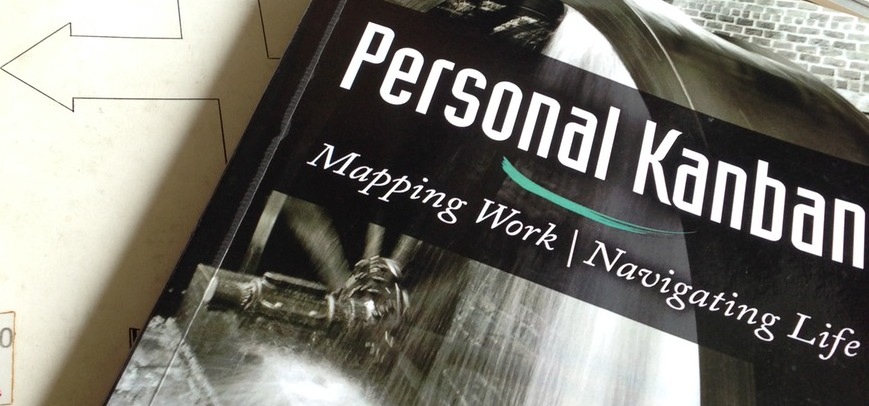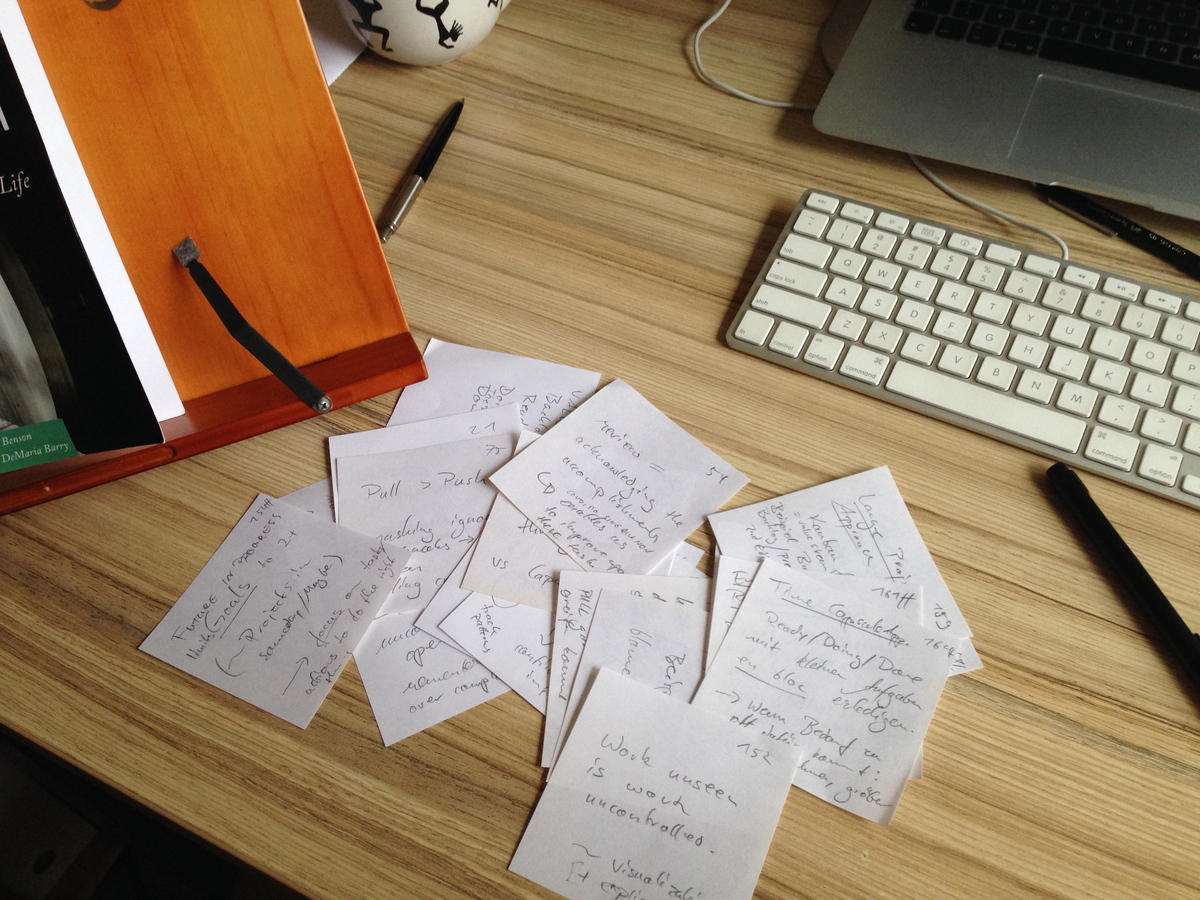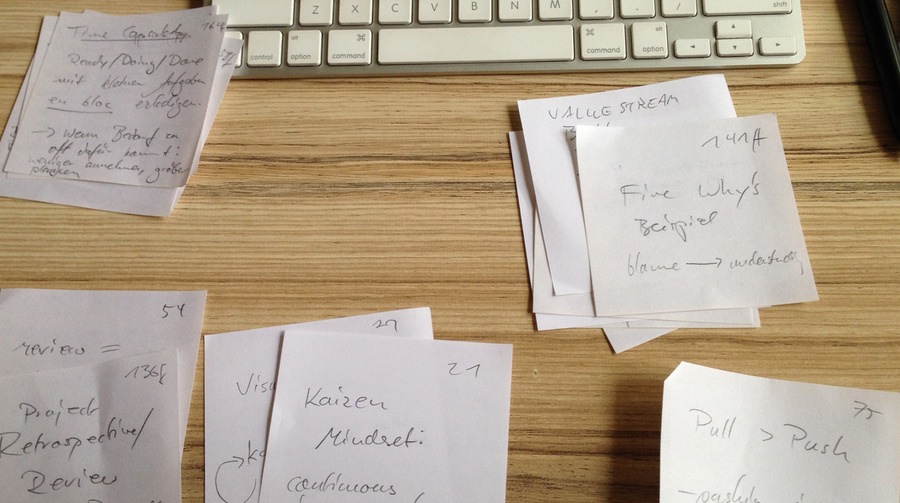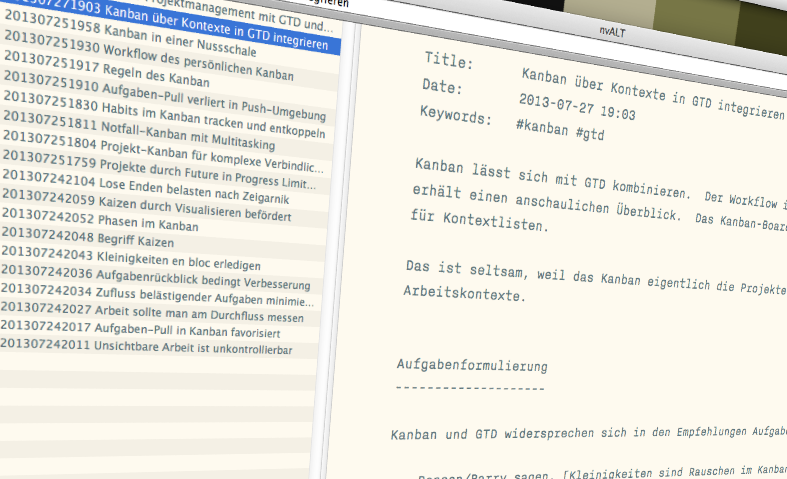Create Zettel from Reading Notes According to the Principle of Atomicity
As I said in my last post, my reading workflow consists of GTD-like phases: collect, process and write.
While I wrote about collecting before, this post is about the three phases of processing notes. In the last section you’ll find a few example Zettels I wrote.
Update 2025-08-12: Sascha elaborated and refined what the Principle of Atomicity means, which has become a very popular yet loaded term since I proposed its use back in 2013. Trying to keep “atomic notes” proved to be more of a hindrance to many note-takers than an enabler. Read the post to find out why.
Why I need to process notes at all
I separate collecting from processing because I don’t hack everything that pops up in my mind while I read a text into my computer. Instead, I take notes on paper.
The thing is, when it’s on paper first, I have to get it into my computer later. That’s the drawback. Sometimes notes get stuck in the books and lie around for weeks or months. I know of a book I haven’t touched in over a year since I read it.
Alternatively, I could type notes on my computer directly. I tried really hard, but taking notes on my Mac while reading just doesn’t work for me. My state while typing is too different from the state I’m in when I read print. Going back and forth requires heavy switching of mental gears. First, this wears me out after a while. Second, this switching ruins the focus: I cannot follow the text properly. That’s why I take notes on paper and mark the passage I want to refer to with a little • in the page’s margin.
If you for one happen to find out how to take notes digitally while you study a book, please don’t hesitate to tell me about your workflow! I’m on Twitter, for example.
So I always carry a small A7 tear-off notepad and a 0.5mm mechanical pencil (soft 2B leads) with me. This is my truly ubiquituous capturing device. I use it to take reading notes when I’m not at home, too.
When I read a book on the go, I tend to collect and carry around a lot of notes with me until I eventually finish the book. For some readings, it seems benificial to process notes before I’m done with the text. Sometimes it’s handy to extract definitions of important concepts for reference before going through the meat of complex arguments and models, for example.
Processing notes is, for me, ultimately related to the pain of emtpying any other inbox the Getting Things Done-way. Here, too, I sometimes don’t know how to act on the physical reminder of a note. It may not have been written with sufficient accuracy. As a result, I have to read a page or two to make sense of it again when I process that note. Don’t worry about your notes being useless, though. Rarely do I have to throw a note away, and with time and practice I got better at preventing this kind of situation.
Now let’s see how all this works.
3 Phases to translate from paper to Zettel

I finished a really good book on personal Kanban recently for which I’ll demonstrate my workflow. The book is by Jim Benson and Tonianne DeMaria Barry (2011): Personal Kanban: mapping work, navigating life,1 Seattle, WA: Modus Cooperandi Press.
I take this particular book for an example because it was a light reading and I didn’t take a lot of notes. It’s a great demonstration on clustering notes first and writing Zettel afterwards, too, because the basic concepts appear repeatedly in the course of the book.
Phase 1: Pull the notes

I don’t notabley pull notes from a book carefully. Any order might have already been lost when I carried the book with me on the go. It may have fallen down, pouring notes all over the place. Other times, I maybe tore notes off of the notepad and stuffed them in the fold in a hurry, so they probably got scrambled already.
Entropy increases over time one way or the other, you know, so I expect the worst and force myself to bring some order to the notes before I do anything else.
Phase 2: Form clusters and create overviews

It has proven useful to not just dive in and convert note by note from paper to text file but prepare some kind of plan instead. Ask yourself: What was your reading intent and how can you capture it best?
Overviews you create yourself enable you to grasp a book’s architecture. Sometimes I’d sketch rough Mind Maps to get a feel for the content as a whole before I can start making sense of the notes. Especially if it took weeks to finish a book I benefit from creating visual overviews first.
I read the Kanban book in a single sitting, though, so the concepts were still fresh on my mind. I didn’t need an overview in this case and found it was fairly easy to cluster the notes. That’s an indicator of a well-written book with a clear focus in my opinion.
Clusters don’t lean onto the book’s outline. A book’s index for example collects references, not caring about the table of contents or the flow of ideas. For definitions of terms a similar approach is useful: collect usage examples in the text and definitions themselves to get a clear picture of the term’s meaning. Clusters can be topic-based, too, just like an index.
This is what I call ‘orthogonal to the content’: they don’t adhere to the succession of pages and sections. Instead, clusters form themselves around any purpose you deem fitting.
Phase 3: Write notes from clusters
I basically repeat this subroutine:
- Start with a note as general as possible per cluster.
- Get to the details in succeeding notes when needed. Atomicity of concepts is key here.
- Feed everything you found out during step 2 back into the overview of step 1. Be as concise as possible.
At first I will try to grasp a whole cluster in a single note. This is especially useful when I can abstract away from the details and carve out a clear concept.
Second, I find out if a cluster’s main point has too many prerequisites to stand alone. It might be a conclusion which draws from lots of assumptions or from complex models I’d need to explain. I prepare the conclusion first and then branch off into other notes to capture all the necessary ideas. This is where links come in handy: the details point back to the concept note and the concept note mentions its detail branches.
The underlying principle I’d call the principle of atomicity: put things which belong together in a Zettel, but try to separate concerns from one another.2 For example, I might collect a list of assumptions in one Zettel which serves as an overview. like hard determinism. A related argument and its conclusion will be kept in another Zettel. Moral responsibility under hard determinism is a good example. I can re-use the arguments without buying into the assumptions because the arguments are of sufficiently general form. Atomicity fosters re-use which in turn multiplies the amount of connections in the network of Zettels.
Conclusion: My notes from the book

From the kanban book I took notes like these (titles translated, newest first):
201307251958 Kanban in a nutshell– this is the newest note. I heavily linked to other notes here and distilled my interpretation of Kanban in 90 words.201307251930 Workflow of personal kanban201307251804 Project-focussing Kanban for complex commitments201307242104 Open loops are mental stress according to Zeigarnik– going back in time, notes on the book will become less complex.201307242052 Phases of (personal) Kanban201307242048 Concept Kaizen– term definitions. Also the vantage point of explanation of a tag’s meaning.201307242017 Favor pulling tasks in Kanban– an important but short detail.
I also related old notes on similar topics to the Kanban concepts. In some cases, I saw a detail from Getting Things Done in a new light and took note about that. The newest notes for example read 201307271903 Integrate Kanban into GTD via contexts and 201307301318 Agile project management with GTD, Kanban and reviews.
Connecting things like that is called “creativity.” There you are, a few nice parting words:
Creativity is just connecting things. When you ask creative people how they
did something, they feel a little guilty because they didn’t really do it,
they just saw something. It seemed obvious to them after a while.
—Steve Jobs (via lifehacker and Zettel no.201308301352)
Next time, I’ll show you more about my software setup and why my note titles are the way they are. Thanks for all the great feedback so far! I’d love to hear from you guys: feel free to mail me or contact me via Twitter!
Update 2017-06-06: Sascha made a video about note processing in his archive.
-
Affiliate link; we get a small kickback by Amazon to support this site if you buy from our link, but it won’t cost you anything. ↩
-
If you’re a programmer, separation of concerns should ring a familiar bell. I deal with notes in a fashion similar to complex code. Instead of writing classes, I create new note files. Accordingly, patterns emerge: there are argumentative notes; there are notes with term definitions; there are sparks and ideas. Each Zettel pattern fulfils a different purpose. ↩